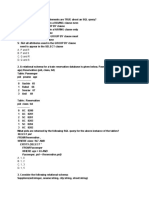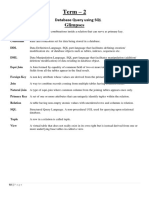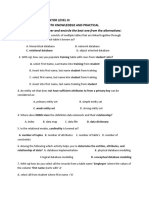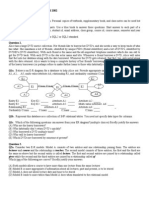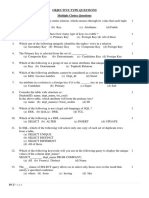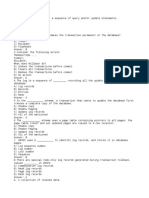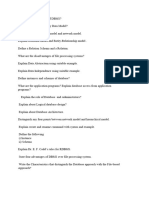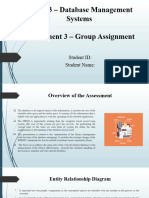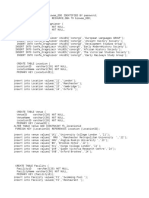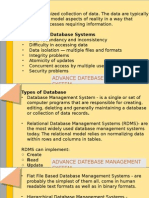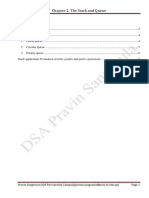0% found this document useful (0 votes)
58 views7 pagesAssignment DBMS
The document contains 5 multiple choice questions about relational databases and SQL. The questions cover topics like functional dependencies, SQL queries, joins, and aggregate functions. Key concepts assessed include functional dependencies, SQL clauses like GROUP BY and HAVING, subqueries, and relational algebra operations.
Uploaded by
hetro2craperCopyright
© © All Rights Reserved
We take content rights seriously. If you suspect this is your content, claim it here.
Available Formats
Download as DOCX, PDF, TXT or read online on Scribd
0% found this document useful (0 votes)
58 views7 pagesAssignment DBMS
The document contains 5 multiple choice questions about relational databases and SQL. The questions cover topics like functional dependencies, SQL queries, joins, and aggregate functions. Key concepts assessed include functional dependencies, SQL clauses like GROUP BY and HAVING, subqueries, and relational algebra operations.
Uploaded by
hetro2craperCopyright
© © All Rights Reserved
We take content rights seriously. If you suspect this is your content, claim it here.
Available Formats
Download as DOCX, PDF, TXT or read online on Scribd
/ 7

